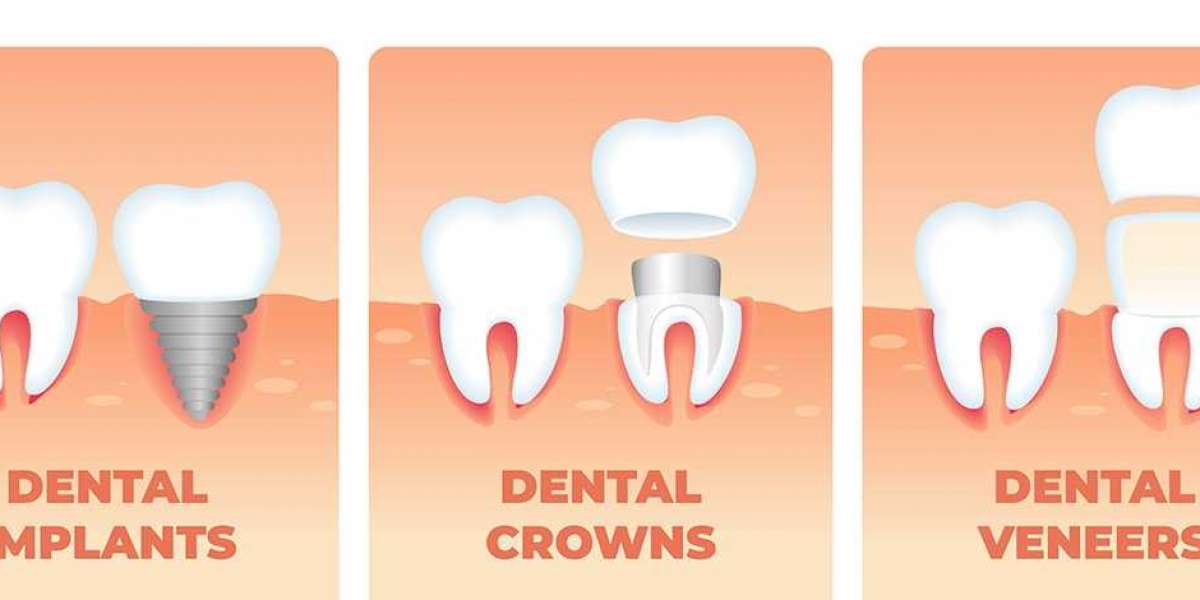Introduction to Dental Crowns and Veneers
Are you looking to restore your smile and regain confidence in your appearance? Dental crowns and veneers are popular options for enhancing the look and function of your teeth. Understanding the difference between these two dental treatments can help you make an informed decision about which option is best for your needs. In this blog post, we will delve into the world of dental crowns and veneers, comparing materials used, application procedures, benefits, limitations, cost considerations, and tips for maintaining these dental restorations. Let's explore how these treatments can transform your smile!
What Are Dental Crowns?
Dental crowns are versatile restorations that cover a damaged or weakened tooth. They act like a protective cap, preserving the tooth's structure and enhancing its appearance. These crowns can be made from various materials such as porcelain, metal, or a combination of both to suit different needs.
The process involves preparing the tooth by removing any decay or damage before shaping it to accommodate the crown. Impressions are taken to ensure a precise fit for the custom-made crown. Temporary crowns may be placed while waiting for the permanent one to be fabricated.
Once ready, the dental crown is permanently cemented onto the prepared tooth, restoring its function and aesthetics seamlessly. Crowns provide strength and durability, allowing patients to chew comfortably without worrying about further damage. Maintaining good oral hygiene is essential in prolonging the lifespan of dental crowns and ensuring their longevity.
Dental crowns play a vital role in protecting and enhancing teeth affected by decay, fractures, or extensive fillings.
What Are Veneers?
Veneers are thin shells made from porcelain or composite resin that are custom-designed to fit over the front surface of your teeth. They can address a variety of cosmetic concerns, such as discoloration, chips, cracks, or gaps between teeth.
These dental enhancements provide a natural-looking appearance while also improving the overall aesthetics of your smile. Veneers are stain-resistant and durable, offering long-lasting results when properly cared for.
The application process typically involves removing a small amount of enamel from the tooth’s surface to ensure a proper fit for the veneer. Your dentist will then bond the veneer securely in place using dental cement.
With proper maintenance and regular check-ups, veneers can last for many years, providing you with a beautiful and confident smile that you can proudly show off.
Comparison of Materials Used for Crowns and Veneers
When it comes to dental crowns and veneers, the materials used play a crucial role in their durability and aesthetics. Dental crowns are typically made from materials like porcelain, metal alloys, or a combination of both. These materials provide strength for chewing while mimicking the natural appearance of teeth.
On the other hand, veneers are usually crafted from thin layers of porcelain that are bonded to the front surface of teeth. This material is known for its ability to resist stains and replicate the translucency of natural teeth effectively.
Porcelain crowns offer excellent aesthetic results with their ability to match the color and texture of surrounding teeth seamlessly. Metal alloys may be more durable but lack the natural look that porcelain provides.
Veneers excel in enhancing smiles by covering imperfections like discoloration or minor misalignments efficiently. However, they may not be as robust as crowns when it comes to extensive structural repairs.
The Procedure: How Crowns and Veneers are Applied
Dental crowns and veneers are both popular options for improving the appearance and functionality of your teeth. The application process for each differs slightly, but both can significantly enhance your smile.
Crowns are typically used to cover a damaged or decayed tooth entirely. The procedure involves reshaping the tooth to make room for the crown, which is then securely cemented in place.
On the other hand, veneers are thin shells that are bonded to the front surface of a tooth to improve its color, shape, or size. The application process usually requires some enamel removal before custom-made veneers are attached.
Both crowns and veneers can be made from various materials like porcelain, ceramic, or metal alloys. Your dentist will recommend the best option based on your specific needs and preferences.
Understanding how crowns and veneers are applied can help you make an informed decision about which treatment is right for you.
Benefits and Limitations of Crowns and Veneers
When it comes to dental crowns and veneers, each option offers its own set of benefits and limitations.
Dental crowns are versatile in restoring damaged teeth, providing strength and protection while enhancing aesthetics. They can be customized to match the color and shape of natural teeth seamlessly.
On the other hand, veneers are a great choice for improving the appearance of stained or misaligned teeth without extensive reshaping. They offer a more conservative approach compared to crowns but may not be as durable.
While both options can significantly enhance your smile, it's essential to consider factors like longevity, cost, and maintenance requirements before making a decision.
Consulting with your dentist will help you determine which option aligns best with your dental needs and preferences.
Choosing the Right Option for Your Needs
When it comes to choosing between dental crowns and veneers, it's essential to consider your specific needs and expectations. Dental crowns are typically recommended for teeth that are severely damaged or decayed, as they provide full coverage and protection. On the other hand, veneers are more suitable for enhancing the appearance of teeth with minor imperfections like discoloration or slight misalignment.
To make an informed decision, consult with your dentist who can assess your oral health and discuss the benefits of each option based on your individual circumstances. Consider factors such as durability, aesthetic results, and long-term maintenance requirements when selecting the right treatment plan for you.
The choice between dental crowns and veneers will depend on your unique situation and desired outcome. Trust in the expertise of your dental professional to guide you towards the most suitable solution that aligns with your goals for a healthy smile.
Maintaining the Longevity of Dental Restorations
Maintaining the longevity of your dental restorations, whether crowns or veneers, is essential for ensuring their durability and effectiveness. Proper oral hygiene practices play a significant role in prolonging the lifespan of these dental treatments.
Regular brushing and flossing help prevent plaque buildup around the restoration, reducing the risk of decay or damage to the underlying tooth structure. It's also important to attend regular check-ups with your dentist to assess the condition of your crowns or veneers and address any issues promptly.
Avoid habits that can compromise the integrity of your dental restorations, such as biting on hard objects or using teeth as tools. Additionally, wearing a night guard if you grind your teeth can protect both natural teeth and restorations from excessive wear.
By following these simple yet crucial maintenance tips, you can enjoy long-lasting results from your dental crowns or veneers while preserving the health and appearance of your smile for years to come.
Cost Comparison
When considering dental crowns and veneers, one important factor to take into account is the cost associated with each option. Dental crowns tend to be slightly more expensive than veneers due to the materials used in their production and the complexity of the procedure involved.
Crowns are typically made from materials like porcelain, metal, or a combination of both, which can impact the overall cost. On the other hand, veneers are often crafted from thin layers of porcelain bonded to the front surface of teeth, making them a more affordable cosmetic dentistry option.
The total cost will also depend on factors such as your location, dentist's experience, and any additional procedures required before placing the crowns or veneers. It's essential to consult with your dentist to get an accurate estimate based on your individual needs and budget constraints.
Conclusion
Choosing between dental crowns and veneers ultimately comes down to your specific needs and goals for your smile. Both options offer unique benefits and can address different dental issues effectively. Consider factors such as the condition of your teeth, the desired outcome, and your budget when deciding which option is right for you.
Remember that maintaining good oral hygiene practices is key to ensuring the longevity of any dental restoration. Regular visits to your dentist in Peoria for check-ups and cleanings will help keep your crowns or veneers in optimal condition.
While cost may be a factor in your decision-making process, it's important to prioritize quality and durability when investing in your dental health. Your dentist can provide guidance on the best choice for your individual situation.








